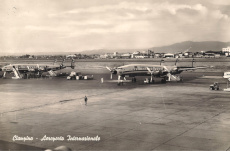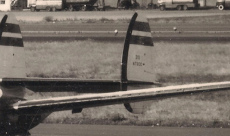
The Starliner of TWA flight 891/59
Lockheed L-1649 Starliner
The Lockheed L-1649 Starliner was the last model of the Lockheed Constellation (Connie) line, it was built at Lockheed’s Burbank, California plant from 1956 to 1958.
Its design used the L-1049G Super Constellation fuselage, the new 150 ft (46 m) wing and four Wright R-3350 988 TC18-EA-2 TurboCompound radial engines, allowing the Starliner to fly non-stop from California to Europe.
“Lockheeds claim that their new airliner, powered by four 3,400 h.p. Wright Turbo-Compounds, will be capable of carrying 58 passengers for 6500 miles at a cruising speed of over 350 m.p.h. and that it will fly from Paris to New York in nearly three hours less time than the DC-7C when carrying the same payload as its Douglas competitor” (Flight International June 10, 1955 p. 785).
The L-1649A prototype first flew on October 11, 1956; this model was produced in 44 units.
Airline service began on June 1, 1957 on a Trans World Airlines (TWA) flight from New York to London and Frankfurt. TWA called their L-1649s Jetstreams and flew them on their longer domestic routes, along with flights from New York to Europe and beyond. In July 1958 TWA scheduled 60 flights each week from Europe to New York, of which 30 were L-1649s, including seven nonstops a week from Paris, five from London, four from Frankfurt, two each from Madrid, Lisbon and Geneva, one from Zurich and one from Rome. Three 1649s a week flew the Polar route Europe to California, sometimes nonstop.
Boeing 707s replaced the last TWA transatlantic passenger L-1649 in October 1961; 707s and Convair 880s displaced them from domestic scheduled flights in December 1962. In the early 1960s Lockheed converted twelve TWA L-1649s to freighters that carried cargo across the Atlantic until 1964 and domestically until 1967.
L-1649A specifications:
General characteristics:
Crew: 5
Capacity: 99 Passengers
Length: 116.2 ft (35.1 m)
Wingspan: 150 ft (45.72 m)
Height: 24.75 ft (7.54 m)
Empty weight: 91,645 lb (45,569 kg)
Max. takeoff weight: 156,104 lb (70,800 kg)
Powerplant: 4 x Wright R-3350 988 TC18-EA-2 radial, 3,400 hp (2,535 kW) each
Propellers: Hamilton Standard Hydromatic 43H60 hollow or solid Dural Blade 3 bladed propellor
Propeller diameter: 19 ft (5.79 m)
Performance:
Maximum speed: 377 mph (607 km/h)
Cruise speed: 290 mph (467 km/h)
Range: 4,940-6,180 mi (7,950-9,945 km)
Service ceiling: 23,700 ft (7,225 m)
Reference text: Breffort, Dominique. Lockheed Constellation: from Excalibur to Starliner Civilian and Military Variants. Histoire and Collections, 2006. p.112 to p.119, p.169 and p.175.
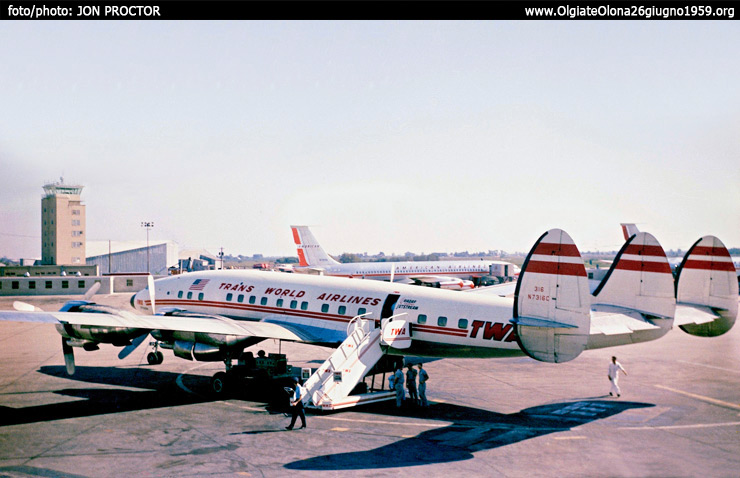
Picture of a L-1649A Starliner took at Chicago-O’Hare Airport on September 3, 1959. The Starliner pictured - registered N7316C - happens to be the airplane Lufthansa Technik is currently restoring. Link to the related website: superstar.lufthansa.com/en/home.html.
[photo and information kindly provided by Jonathan Jon Hibbard Proctor (1942-2020) - www.jonproctor.net]
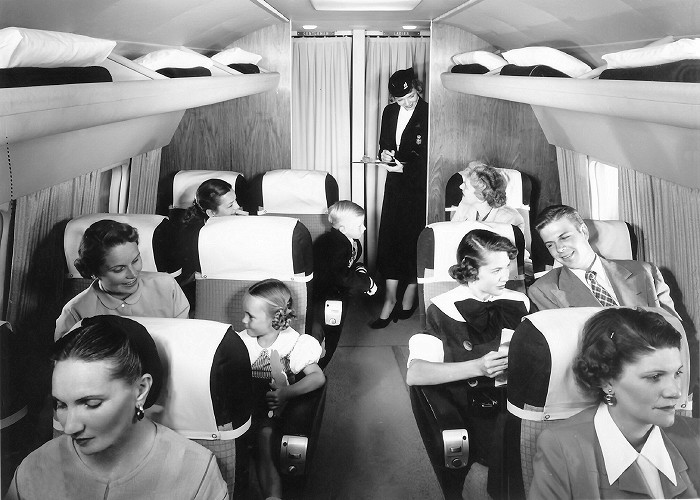
Inside a starliner
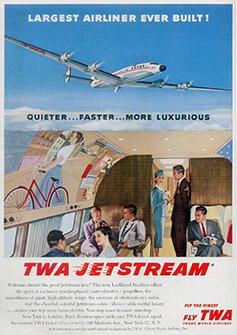
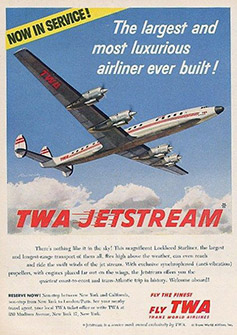
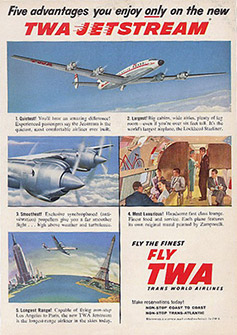
1957 - TWA advertising posters for L-1649A Jetstream Starliner fleet
